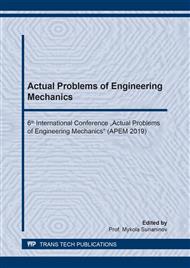p.468
p.475
p.486
p.496
p.511
p.519
p.528
p.534
p.541
Effective Characteristics of the Multi-Modular Composites under Transverse Stretching
Abstract:
In this article is determined the ratio between effective elastic characteristics of the fibrous transversally isotropic material. Fibrous uniaxial material, which consists of the isotropic elastic matrix and fiber, is in the focus of attention. It is assumed that mechanical properties of components under stretching and compression are different, notably matrix material and fiber material are multi-modular. Transverse stretching and transverse compression of composite cell are considered. Two problems for each type of strain are solved. In the first problem stresses and displacements of matrix and fiber under conditions of their common axisymmetrical deformation are determined. Subsequently similar characteristics for the cell deformation of the homogeneous transversally isotropic material as a composite are determined. Ratio between effective composite’s characteristics is solved from the conditions of equality of the axial displacements of the composite’s cell and radial displacements on its surface. The relation of the calculated ratio from volume fraction of fiber in a composite is analyzed.
Info:
Periodical:
Pages:
511-518
Citation:
Online since:
August 2019
Authors:
Price:
Сopyright:
© 2019 Trans Tech Publications Ltd. All Rights Reserved
Share:
Citation:


